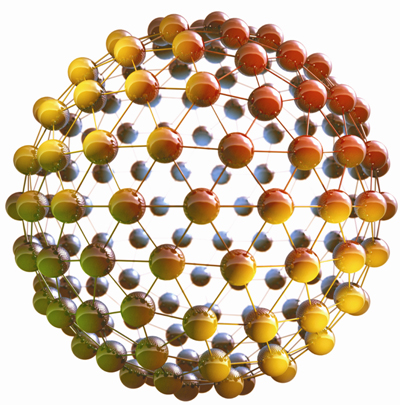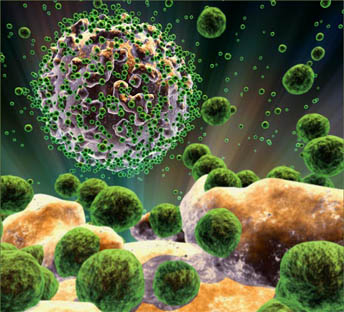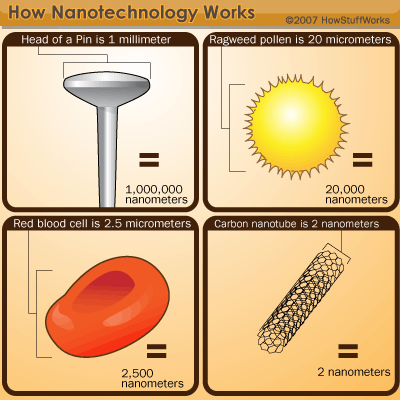Nanoparticles are particles that have one dimension that is 100 nanometers or less in size.The properties of many conventional materials change when formed from nanoparticles. This is typically because nanoparticles have a greater surface area per weight than larger particles, this causes them to be more reactive to certain other molecules.
 Nanoparticle
Nanoparticle
Nanoparticles are used, or being evaluated for use, in many fields. The list below introduces many of the uses under development. You can use the links in each paragraph to go to a detailed explanation. Particles are further classified according to size : in terms of diameter, coarse particles cover a range between 10,000 and 2,500 nanometers. Fine particles are sized between 2,500 and 100 nanometers. Ultrafine particles, ornanoparticles are sized between 100 and 1 nanometers. Nanoparticles may or may not exhibit size-related properties that differ significantly from those observed in fine particles or bulk materials.Nanopowders are agglomerates of ultrafine particles, nanoparticles, or nanoclusters. Nanometer-sized single crystals, or single-domain ultrafine particles, are often referred to as nanocrystals.
You might also like
| Nanomaterials - the Future Technology Nanomaterials is a field that takes a materials... | Application of Nanotechnology With nanotechnology, a large set of materials... | Nano Coatings The nano coatings, "liquid solids"... | What is Nanotechnology? Nanotechnology is the engineering... |




 Alloy Suppliers
Alloy Suppliers
 Aluminum
Aluminum
 Aluminum Extrusions
Aluminum Extrusions
 Copper-Brass-Bronze
Copper-Brass-Bronze
 Nickel
Nickel
 Magnets
Magnets
 Stainless Steel
Stainless Steel
 Stainless Steel Tubing
Stainless Steel Tubing
 Steel Service Centers
Steel Service Centers
 Titanium
Titanium
 Tungsten
Tungsten
 Wire Rope
Wire Rope